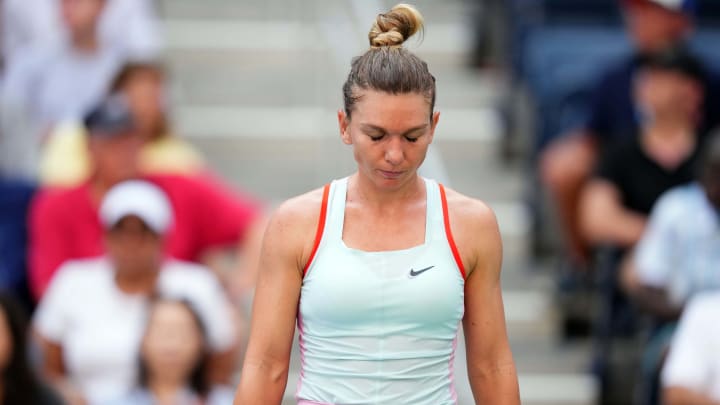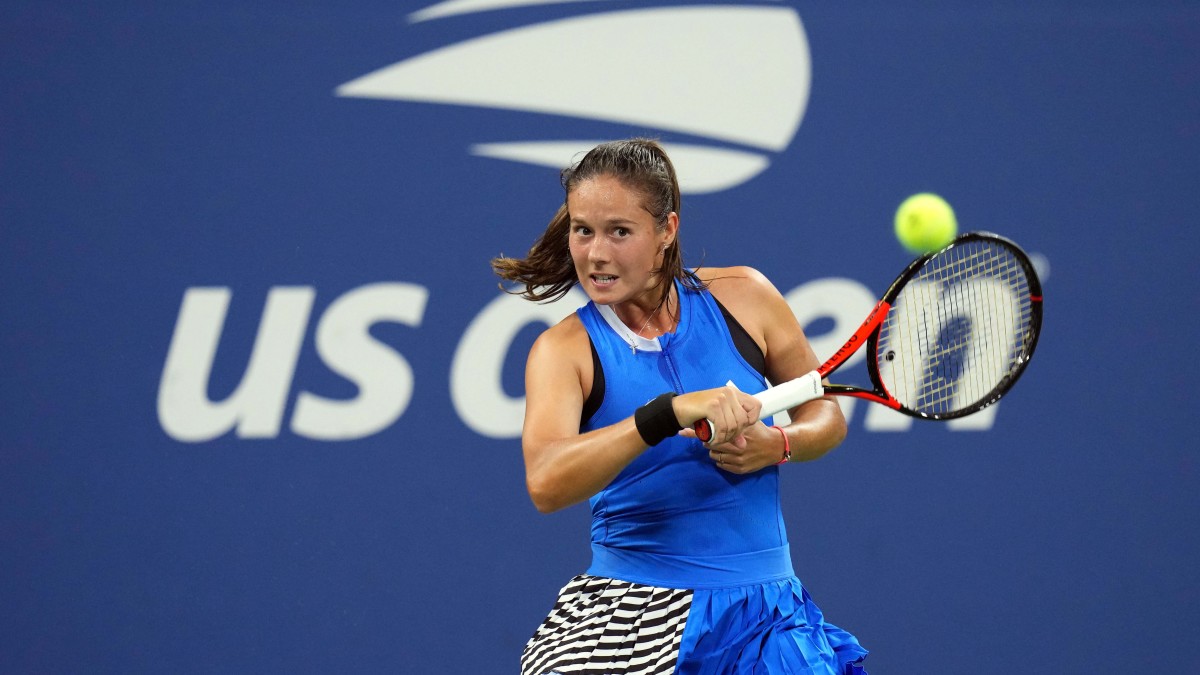Simona Halep’s Doping Case Challenges Tennis’s Policy on Responsibility and Punishment

Editors’ note, upon publishing: Questions in this mailbag were lightly edited for clarity and brevity.
• Here’s the latest episode of the Served podcast with Andy Roddick. As a friend noted, “Roddick kinda reminds me of J.J. Reddick with a better serve.”
• Here’s the Sports Illustrated cover story, in advance of Indian Wells, on Novak Djokovic.
While wondering whether I was the last person to learn that Serena Williams bounced the ball five times before her first serve and two times before her second … Onward …
The athlete is the CEO of their team, the responsibility lies with them. This circumstance sucks for Halep but what’s the alternative, to not have a clean sport?
@craiggg
• Full context: On Served (he says pluggingly) Roddick and Kim Clijsters discussed the Simona Halep doping ban and the role of the coach. In this case Patrick Mouratoglou clearly—and to his credit, he admits as much—implored the player to begin a supplement regimen. In the most charitable scenario, the supplements were tainted or mislabeled. The player is serving a four-year ban now and, pending appeal, may never play again. The coach moves to a new player, resumes staging exhibitions and, as Roddick points out, blithely resumes posting “top five servers” polls in his social media channels, while the player spends millions to claw back her reputation and the right to compete again.

Like so much in tennis, this falls into the “look, do you want to be varsity or jayvee?” category. Credible sports leagues have firm domestic violence policies. They have easily accessible advanced stats. They don’t let it get to March without announcing the site of their showcase yearend championship event. They have a policy preventing a coach from resuming his career without consequence, while the player he encouraged to take supplements (again, that’s the benefit-of-the-doubt interpretation) faces a four-year ban. This isn’t personal. This is just the fact pattern. And tennis needs to decide whether it’s okay with it.
Reader @iduckerschein put it like this: “If Patrick Mouratoglou took responsibility, why isn’t he given a doping ban as well? The athlete has to bear final responsibility, but that doesn’t exonerate Mouratoglou and his team fully. Coaches who do help athletes to dope need to be suspended too, in all sports”
Good morning! Surely I will have all Russian fans calling for my head with this question, but while I acknowledge that [Daniil] Medvedev and [Andrey] Rublev and other Russian players did not torture Alexei Navalny to death in the Arctic nor are they planning the design of satellites to attack us from space, am I off base that it is incumbent upon tennis to take a moral stance and ban Russian players from Grand Slams? Putin is … clearly planning to try to destroy the West, and he tortures dissidents to death. …
I completely understand that twentysomethings don’t want to jeopardize their families or end up tortured to death in an Arctic prison. But some things transcend tennis and Putin should not be allowed to capitalize on athletic success; we need to isolate and sanction his regime into oblivion.
Best, Laura
• This is essentially a redux of the discussion from 2022 when after Russia invaded Ukraine, tennis—like many industries—debated whether to punish the Russians in the workforce. At some level, this is a fundamental question of moral philosophy: To what extent do we hold individuals responsible for the crimes of the state? Two twists (offsetting) here. 1) Putin uses the success of Russian athletes as symbols of Russian triumphalism. (Note the systematic doping scandal that doubled as the Sochi Olympics.) 2) In tennis, athletes are individuals who don’t represent countries and often don’t even live in their country of origin.
Last week, my take on all of this was similar to the reader’s … but swung the other way. Given what happened to Navalny, does it not make the stance of Daria Kasatkina (and to a lesser extent, Rublev) more courageous and admirable? We had plenty of examples prior, but Navalny’s death is also a reminder of the brutality of this autocrat and how he feels about dissent. It also explains why players like Medvedev (and the Belarussians, too) would duck these questions or avoid repudiating their leader. Don’t the Russian players deserve more of tennis’s support, not less?

Hi Jon,
Many years back you published a rant from me about how paying spectators are left waiting outside the entrance to the courts till the changeover, Given the nature of tennis scoring this time can be indeterminate. In particular at set breaks you have to wait 3 games. It is so refreshing to see the Aus Open take a stand in favor of spectators. i.e. the paying customers who make the tour possible.
I was appalled by the comments of some of the players. Don’t they understand that it’s the spectators and fans who make all of this possible? Shouldn’t they show some consideration to them? Have they ever watched basketball players shoot free throws while spectators are actively trying to disturb their concentration?
Ananth
• I don’t recall much outcry—at least outside of Jordan Thompson (a winner last week) somehow connecting this to “wokeness,” the omnibus default insult for anything disagreeable. Djokovic was confused by the policy change, but not irate. Other players claimed they didn’t even notice the fans.
You can’t make spectators wait an entire changeover. You just can’t. (Someone noted that in some NBA arenas, fans now have to wait for a dead ball before returning to their seats. Fine. That’s seldom more than a minute.) Like most changes in tennis (life?), there is an initial outcry and then, at escape velocity, we get used to change. We, as a species—and a tennis community—sell short our adaptability. Whether it’s the 10-point super tiebreak, line-calling robots or the move away from white tennis balls … name the last rule change or innovation that had fans and players clamoring for more than a week.
A friend reminded me of a funny story I told years ago. Every year during US Open qualifying week, I would park myself in the old Armstrong stadium—first row behind the baseline—and watch a parade of top-ten players practice with each other. One time, Goran Ivanisevic was hitting (but I can’t remember with whom). There were maybe fifty people in the entire stadium, which made it impossible to ignore a group of unruly 14-year-old boys sitting next to me, heckling Goran relentlessly. He took it good-naturedly for a while, but then he took his revenge. He was at the opposite end of the court while his partner fed lobs for overhead practice. At which point Ivanisevic, one of the most feared servers of all time, proceeded to launch a fusillade of 130 mph overheads into the seats, trying and succeeding to hit these boys. It was all very entertaining, except for the fact that I was sitting barely two feet away and in danger of becoming roadkill. I was on red-alert, but Goran was amazingly accurate and not even one screaming overhead came at me. It was a very unique perspective on big-time power tennis.
Rich, New York City
• Thanks. Great story. And one that either doesn’t happen today, given the chilling role of cameras … or instantly goes viral.
So Jordan Thompson won singles and doubles in the same tournament in the same week. It is a great accomplishment. But the great Martina Navratilova did it 80 times despite Chris Evert being on her tail like a bobcat. Thoughts?
Joe Johnson
Easton, Pa
• I have no objectivity here. But I am hard-pressed to think of an athlete whose career and records have aged more gracefully than Navratilova’s.
What happened to racquet company Prince? In the past Prince sponsored many pros but nowadays hardly any pros play with Prince. Does Prince still sell a good amount of racquets to the general public? Hopefully Prince does not go out of business.
Sunny, Philadelphia, PA
• My sources paint a grim picture. Prince is now owned by Authentic Brands Group, ironically the same company that owns Sports Illustrated. They then license the name to other companies. I was told that, as of now, “Dick’s Sporting Goods is one of the [few] retail distributors of Prince. In fact, they have Prince table tennis tables, Prince table tennis balls and other ‘Prince’ branded items in addition to the tennis racquets in their stores. The only caveat is that Dick’s has the under $100 price points on racquets (mainly pre-strung) racquets.” With John Isner retired, there are no top-tier Tour players that use a Prince racket. And a racket brand that once had more than half (!) the overall market share, now has less than one percent.
World #652 Rafael Nadal. Was also wondering how it was possible that Nadal had 22,19 losses, but turns out it’s just a poorly conceived graphic layout that jams losses and titles together.
Helen in DC

• Amazing how you can lose more than 22,000 matches and still win more than $130 million for your career (not counting your endorsements, exhibitions and the lucre that came when you took the Saudi bag).
Shots:
• Late to the fiesta here, but love this story from Dana O’Neil in The Athletic.
• Not to be outdone, here’s the great Jeff Day in the Star Tribune.
• Three new talented tennis players have committed to the 2024 Charleston Open, the largest women’s-only professional tennis tournament in North America, in competition from March 30–April 7 on Daniel Island in Charleston, S.C. Elina Svitolina, Paula Badosa and Leylah Fernandez join a player field that includes World No. 5 Jessica Pegula, World No. 6 and defending champion Ons Jabeur and former Charleston champions Madison Keys and Sloane Stephens. The tournament, which was named the WTA 500 Tournament of the Year in 2022 and 2023, is the annual clay season kickoff event on the WTA Tour and is hosted annually in the state-of-the-art Credit One Stadium.
• Canadian Denis Shapovalov will make his U.S. Men’s Clay Court Championship debut at River Oaks Country Club for this year’s ATP tournament March 30-April 7.
• ATP players Mackenzie McDonald, Ben Shelton and Cameron Norrie have come together to direct $100,000 of charitable donations to support environmental sustainability initiatives. The donations, made on their behalf by ATP, were awarded in recognition of the players’ climate leadership through ATP Carbon Tracker in 2023.
Carbon Tracker, an app launched last season in collaboration with Infosys, digital innovation partner of the ATP Tour, enabled players to track, assess and offset carbon emissions from travel on Tour. Through their actions, players competed for position on an in-app leaderboard, with the top three players at the end of the season winning the opportunity to elect charitable causes to support.
